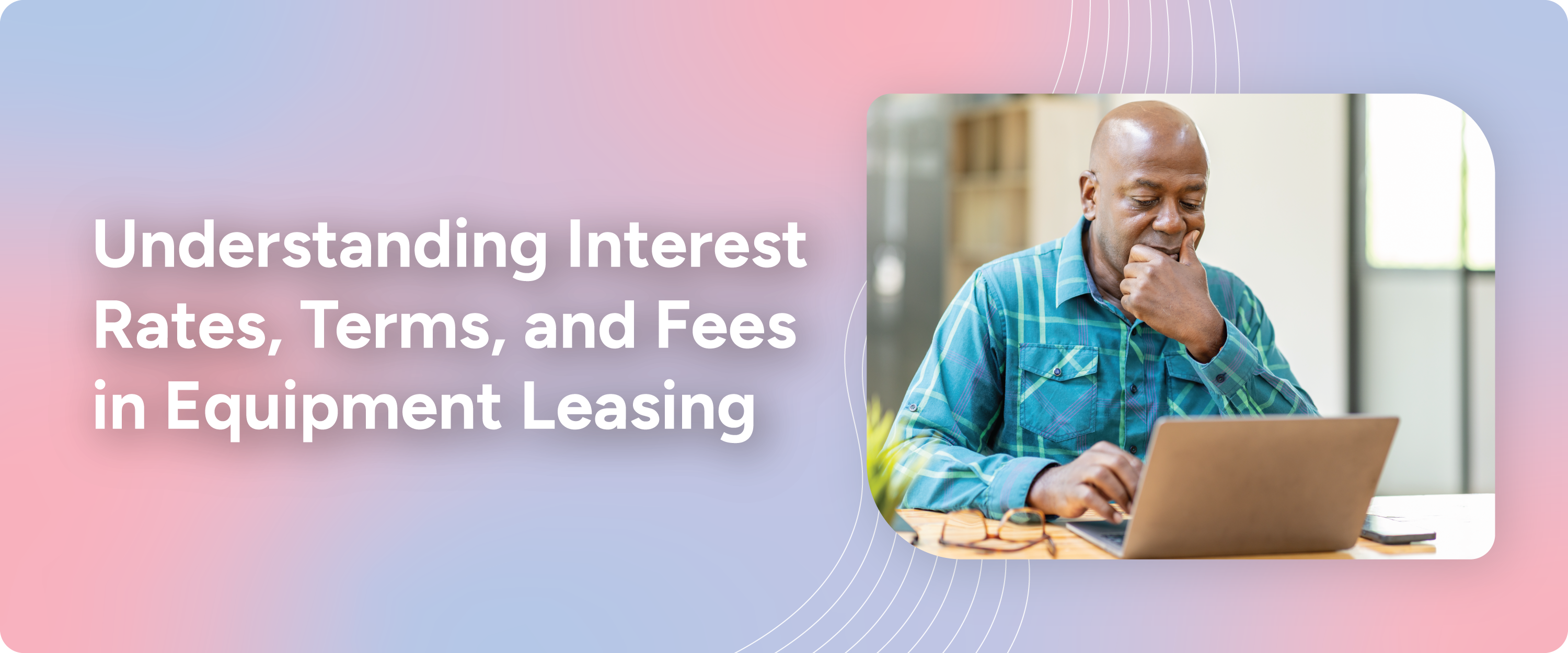The Future of Leasing in Small Business: How Equipment Leasing will Change

As small businesses continue to evolve in a fast-paced economy, equipment leasing is poised to play a more strategic role than ever before. With advances in technology, shifts in economic conditions, and new trends shaping the landscape, business owners are rethinking how they get the tools they need to grow. In this blog, we’ll explore what the future of equipment leasing looks like, where the industry is headed, and how Clicklease is helping small businesses navigate change with confidence.
What Is the Outlook for Equipment Leasing?
The outlook for equipment leasing is bright. As more startups enter the market and existing businesses seek efficient ways to upgrade and scale, leasing will become an even more common strategy.
With small businesses making up over 99% of all U.S. businesses, demand for accessible equipment solutions is high. Leasing is no longer just a temporary fix; it’s becoming a long-term strategy that allows business owners to manage cash flow, preserve credit lines, and access the latest equipment without large upfront costs.
Leasing will continue to shape small business growth over the next 10 years, and continue to grow a presence in the equipment financing industry.
How Big Is the Equipment Leasing Industry?
The equipment leasing industry is a major player in the U.S. economy. It contributes nearly $1 trillion annually in capital goods investment and accounts for about 55% of all equipment acquisition. That means more than half of U.S. businesses choose leasing over purchasing outright- a trend that continues to grow each year.
For small businesses especially, leasing levels the playing field. It gives them access to equipment that might otherwise be out of reach, enabling them to compete with larger companies without tying up working capital.
What Are the Advantages and Disadvantages of Leasing Equipment?
Leasing comes with a variety of benefits for small business owners:
Advantages:
- Simple payments: Predictable monthly costs make budgeting easier.
- Access to upgrades: Stay current with the latest technology and tools.
- Preserve cash: Keep funds available for other investments like marketing, hiring, or product development.
- Tax benefits: Many leases allow for tax deductions, improving financial efficiency.
Disadvantages:
- No ownership: At the end of the lease, the equipment typically goes back to the provider unless there is an option to purchase.
- Long-term costs: Over time, leasing may result in paying more than buying outright.
- Commitment terms: Some leases require long-term agreements that may not fit every business’s plans.

To understand how leasing compares to other ways to get equipment, including customer-based payment options, explore our guide to the Best Customer Financing Programs for Small Businesses.
At Clicklease, we understand these challenges and have built a leasing experience that supports small business growth. Our focus is on simple monthly terms, fast decisions, and easy-to-understand agreements that help business owners make informed choices.
What Happens to Equipment at the End of a Lease?
One of the most common questions from business owners is, “What happens when my lease ends?” The answer depends on the lease agreement. Clicklease offers end-of-term options such as:
- Return: Send the equipment back with no further obligation.
- Purchase: Buy the equipment for a final payment, often at fair market value or a low set cost.
- Renew: Extend the lease to continue using the equipment.
Clicklease provides clear end-of-lease terms, so our customers know what to expect from day one. Whether you want to return, purchase, or renew, we make the process simple and transparent.
Trends Shaping the Future of Equipment Leasing
Several key trends are influencing the future of leasing in small business:
- Tech-driven decisions: Digital applications and instant lease decisions are becoming the norm, helping small business owners get what they need quickly.
- Customized lease experiences: Leasing is moving away from one-size-fits-all traditional equipment financing options to more tailored solutions that reflect each business’s goals.
- Startup growth: More new businesses are leasing as a way to conserve capital and remain nimble in uncertain markets.
- Tax planning: Equipment leasing can be a powerful tax strategy, giving business owners new ways to manage end-of-year planning.

How Clicklease Supports the Future of Small Business
At Clicklease, we’re passionate about supporting small business success. Our approach to equipment leasing is designed with simplicity, speed, and clarity at its core. We offer instant lease decisions, straightforward terms, and a customer-first mindset that helps entrepreneurs grow on their terms.
Whether you’re just getting started or looking to scale, Clicklease makes equipment leasing simple, accessible, and built for today’s business landscape.





